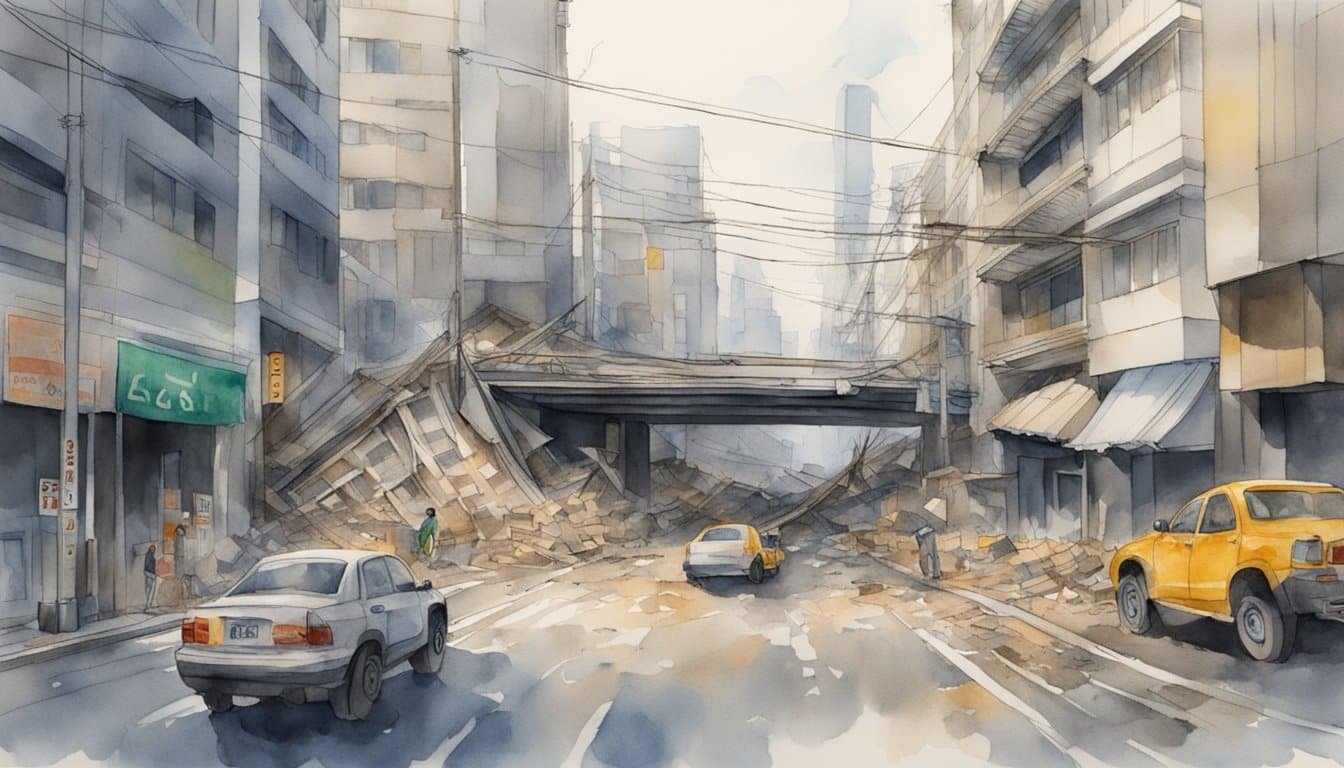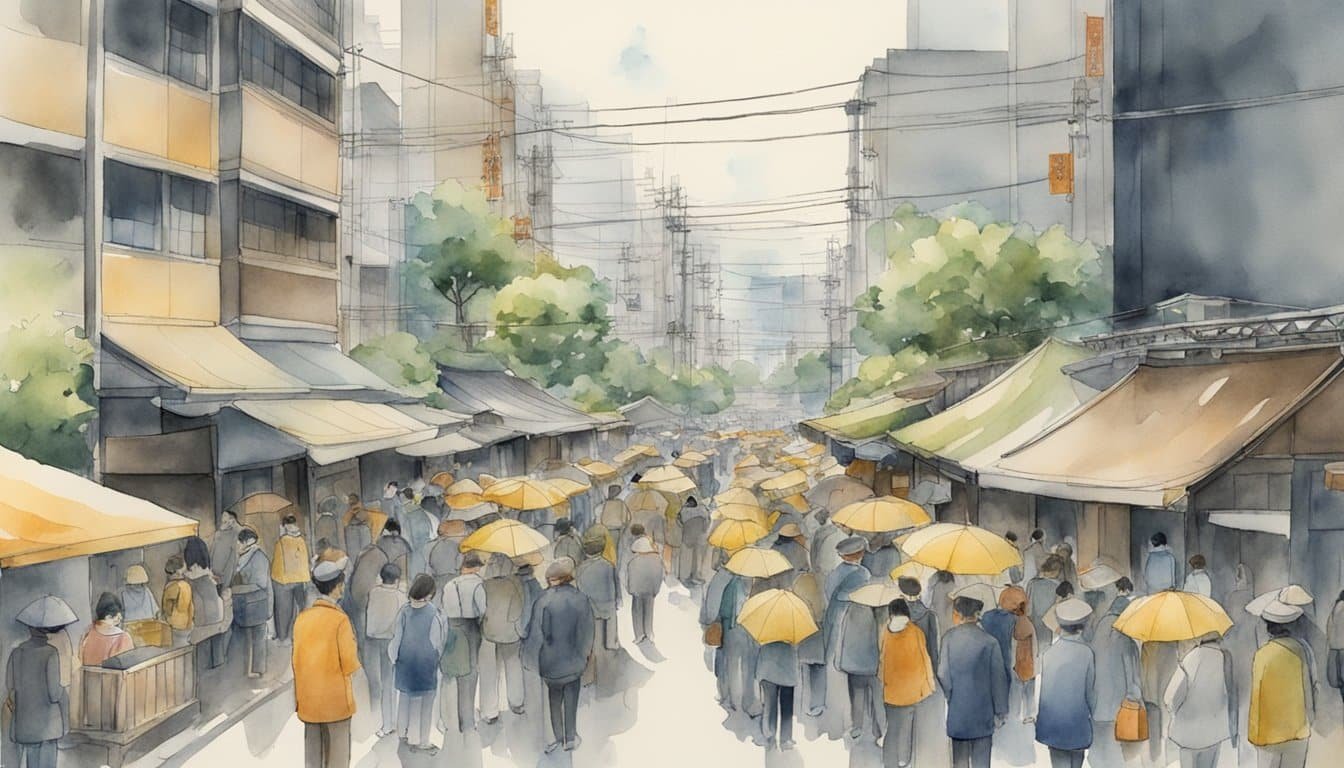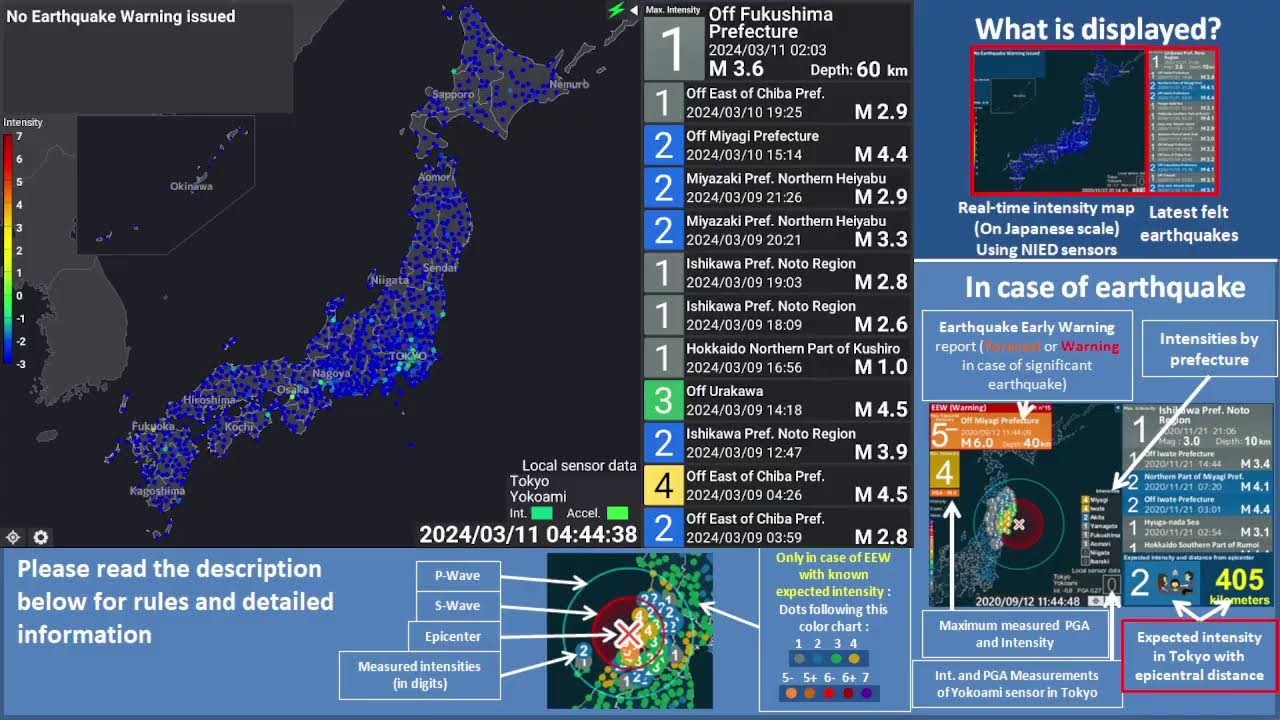Overview of Tokyo Earthquakes
Tokyo, the bustling capital of Japan, lies in one of the most seismically active regions in the world. Earthquakes, both large and small, are a common occurrence here. The Japan Meteorological Agency closely monitors this activity, providing vital information to residents and authorities.
Japan is no stranger to earthquakes, with many prefectures, including Tokyo, feeling the shaking regularly. When an earthquake strikes, the intensity and impact on Tokyo can vary. A magnitude 5.9 earthquake, for example, might shake buildings but not always cause significant damage.
The Great East Japan Earthquake in 2011 reminded the world of the devastating potential of seismic events in this region. The quake’s epicenter was northeast of Tokyo, but the effects were strongly felt in the city. The earthquake and subsequent tsunami caused unprecedented damage and loss of life, highlighting the fragility of even the most prepared cities.
Earthquakes in Tokyo and the surrounding areas often lead to fascinating discoveries about Japan’s geography and the Earth’s underlying tectonic mechanisms. Residents and scientists alike are continually learning and adapting to live with the reality of the ground beneath them being in constant motion.
In Tokyo, earthquake preparedness is a part of daily life. Drills, educational programs, and building codes are continuously updated, reflecting the new insights gained from each seismic event. Here’s an interesting overview of earthquake phenomenology in Japan, focusing on the seismic activity that Tokyo experiences.
Impact on Infrastructure and Response

In the wake of a major earthquake in Tokyo, the resilience and response of infrastructure systems have been pushed to their limits, showcasing both their strengths and the challenges to overcome.
Building and Structural Damage
Earthquakes in Tokyo have historically led to significant structural damage due to the violent shaking. The 1923 Tokyo earthquake highlighted how civil society played a key role in coping with such damage when physical infrastructure was lacking. Modern buildings are designed to withstand the tremors, yet the older structures often suffer. Rubble from collapsed buildings hampers rescue efforts and poses dangers to those trapped and their potential rescuers.
Transportation Systems
The impact on transportation is immense, with train services frequently disrupted. The East Japan Railway Co meticulously plans for such events, ensuring that bullet trains like the Shinkansen can continue to operate safely after an earthquake. Yet, the damage to infrastructure like tracks, roads, and bridges inevitably leads to service suspensions and evacuations, as seen in Chiba and Yokohama.
Energy and Nuclear Concerns
Concerns about energy and, more specifically, nuclear issues become paramount during earthquakes. The Fukushima disaster showed the world the risks of nuclear power during such crises. Power outages are common, and the Shika plant in Ishikawa Prefecture, overseen by the Nuclear Regulation Authority, is of particular interest due to radiation risks. Backup systems and stringent regulations help to minimize the potential impact on the nuclear industry and prevent devastating outcomes like those in the past.
Human Aspects and Government Measures

In the wake of a Tokyo earthquake, the Japanese government and emergency services implement rigorous measures to address the immediate needs of the injured and displaced, as well as ensure accurate information is disseminated to the public.
Emergency Services and Relief Efforts
After an earthquake strikes, Japan’s emergency response is immediate with operations focusing on search and rescue efforts. Special attention is given to evacuating victims, particularly in areas with tsunami warnings. Strategies are informed by science, taking into account earthquake depth and expected aftershocks. In the event of a disaster, essential services such as water supply, power outage protocols, and emergency stop measures for public transport including All Nippon Airways (ANA) flights are promptly enacted. The nation, well-versed in disaster preparedness, also utilizes unique resources like lacquerware, a traditional waterproof container, for distributing clean water in affected areas.
Rescue boats are deployed to navigate through inundated regions, ensuring that citizens trapped by floodwaters are brought to safety. The Japanese government has established evacuation centers throughout the capital and affected regions, providing shelter and medical care for the injured. For more details on the dynamics of these operations, navigate here.
Political Leadership and Information Dissemination
In times of crisis, Japanese political leaders, including Prime Minister Fumio Kishida, step forward to lead the nation. The government ensures disaster-related information is provided to the public via various channels, including national broadcasters like the BBC, and through mobile phones. This ensures people across Asia and the world remain informed about the situation in Japan.
The government’s information strategy also emphasizes the importance of accurate and timely tsunami warnings to prevent further casualties. Prime Minister Fumio Kishida’s administration emphasizes transparency and regular updates during disaster recovery phases, highlighting the vital nature of communication. For insights into the government’s role in providing information and guiding citizens during an emergency, read more here.

